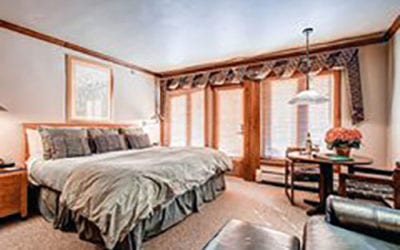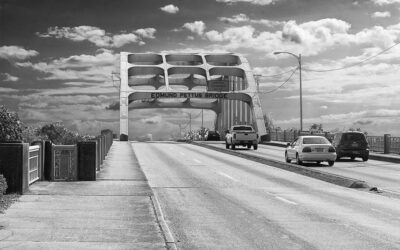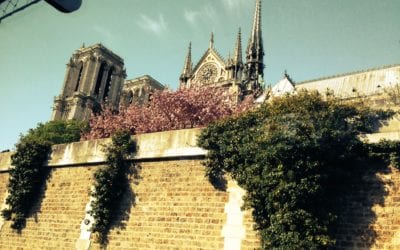
Heidelberg Castle from Hotel Zum Ritter, Room 206, ©Leocha
I used to live in Heidelberg. I was an expert on the basic sights like the Old Town, the castle, the bridge and the Hauptstrasse. I was a super expert when it came to bars in town and I could make my way into a favorite restaurant or two when necessary.
However, on my last trip to Heidelberg I discovered a side of the city that I had ignored in my younger days. I learned what an important center of education Heidelberg University has long been in Europe. I was shown the student jails, stood at the podium of the oldest lecture hall, visited the humble home of Germany’s first president, ate student chocolates, attended an orchestral concert and rediscovered some of my favorite restaurants.
The quotes in this story come from Mark Twain’s A Tramp Abroad. Twain had a love affair with Heidelberg back in 1878. He wrote much of A Tramp Abroad here (only to rewrite it later in Munich) and worked on portions of Huckleberry Finn as well, inspired by the Neckar River.
Of course, at the top of anyone’s list upon visiting Heidelberg is a ride up the funicular to the castle, a tour of the massive Renaissance edifice, a stroll through the gardens and a moment to gawk at the world’s largest wine barrel. Rightfully, the Heidelberg Castle has been voted the #1 sight in Germany.
Whether gazing down on the sparkling town by night or the city’s rooftops by day, the views from the castle are inspiring. I spent my first night strolling through the castle gardens. Below me the city sparkled much as Mark Twain described it, as a “fallen Milky Way.”
Even back in Twain’s day, the castle illumination was something not to miss. In 2014 there are three illuminations taking place, on June 7th, July 12th and September 6th. Here is Twain’s description.
An illumination of Heidelberg Castle is one of the sights of Europe. The Castle’s picturesque shape, its commanding situation midway up the steep and wooded mountainside, its vast size — these features combine to make an illumination a most effective spectacle.
…the ruin was suddenly enveloped in rolling and rumbling volumes of vaporous green fire, then in dazzling purple ones. Then a mixture of many colors followed and drowned the great fabric in its blended splendors. Meantime the nearest bridge had been illuminated and from several rafts anchored in the river, meteor showers of rockets, Roman candles, bombs, serpents and Catharine wheels were being discharged in wasteful profusion into the sky — a marvelous sight indeed to a person as little used to such spectacles as I was.

Stop for a coffee and apple strudel or other pastry. Enjoy a beer or two. And, make sure to stay in town for a lusty dinner at one of the old traditional restaurants like the Roten Ochsen, Hackteufel, Schnitzelbank or Goldener Hecht. (Heidelberg is filled with wonderful restaurants; these are mentioned as seasoned traditional and affordable spots.)
While most American tourists make a whirlwind swing through Heidelberg, the town deserves some time. This city is an integral part of Medieval and modern German history and is considered the home of humanism. Its university is the oldest in Germany and the third founded in Europe. It was the home of Germany’s first president, who rose from the ranks of the labor movement.
Not only does this town deserve more time than a day trip in order to take in the flavor, culture and history of the city, but its nearby towns upriver are a collection of fantasy Roman ruins in Bad Wimpfen, the old town surrounded by a fold in the river at Hirschhorn, and fairytale castles like Hornberg and Dilsberg. All make for wonderful day trips from a base in Heidelberg.

Just behind the very traditional setting of the Alte Aula is the almost comical and fascinating collection of the student prisons. Back in the original days of universities, they functioned with their own set of rules and punishments, since universities were considered to be independent. Hence, Heidelberg had its student prison for students who broke the rules.

It seems that the student may break a good many of the public laws without having to answer to the public authorities. His case must come before the University for trial and punishment. If a police man catches him in an unlawful act and proceeds to arrest him, the offender proclaims that he is a student and perhaps shows his matriculation card, whereupon the officer asks for his address, then goes his way and reports the matter at headquarters. If the offense is one over which the city has no jurisdiction, the authorities report the case officially to the University … The University court send for the student, listen to the evidence, and pronounce judgement. The punishment usually inflicted is imprisonment in the University prison.

Again in Twain’s words: The ceiling was completely covered with names, dates, and monograms, one with candle-smoke. The walls were thickly covered with pictures and portraits (in profile), some done with ink, some with soot, some with a pencil, and some with red, blue, and green chalks; and wherever an inch or two of space had remained between the pictures, the captives had written plaintive verses, or names and dates. I do not think I was ever in a more elaborately frescoed apartment.
Another surprising and historic spot in Heidelberg is the home of Friedrich Ebert, the first president of Germany. He served from 1919 to 1925. His humble beginnings are clearly seen where he lived with his parents and five brothers and sisters, in three small rooms. The tiny apartment was also used by his father as a workshop.
Much of Germany’s current employment rules, with liberal vacations and strict rules that protect many workers, flow from his time. He was faced, after the First World War, with trying to walk a political tightrope between the rising Communist party influence and the right-wing party that eventually resulted in Hitler’s rise. Needless to say, with such passionate political opposites, his time as Germany’s president was controversial.
Romance has always played a part in the history of Heidelberg. Legend holds that Frederick V and Elizabeth Stuart were madly in love with each other and that Frederick created the Heidelberg castle gardens and built an entire new wing on the castle for his bride.
Their story has a relatively tragic end when Frederick accepted, against the advice of his advisers, the title of the King of Bohemia. His kingship only lasted a winter before he was chased out of his palace by forces of the Catholic Holy Roman Empire. This event marked the start of Europe’s 30 Years War. Frederick’s fortunes went from bad to worse. His supporters in Prague were beheaded, his allies abandoned him, and he went into exile dying of pestilence.
Eventually, the descendants of Frederick and Elizabeth would become the royal family of Great Britain through their daughter, Sophia, whose son, George, would become the first King of Great Britain and Ireland. The House of Hanover line of British royalty continues to this day.

The Cafe Knösel (still open at the corner of Unterestr. and Haspelgasse) was one of the main meeting places for students and the finishing-school girls. Fridolin Knösel, the pastry chef at the cafe, developed a chocolate delicacy called the Student Kiss – a chocolate praline nougat, thin wafers, covered with a layer of chocolate. These became a form of accepted love currency that could be exchanged between the wannabe lovers to declare interest. The Knösel family still maintains a chocolate shop at Haspelgasse 16 that still sells these original “Student Kisses.” Buy a few for your wannabe lover or yourself.

The Church of the Holy Spirit is the best-known and most prominent church in town, with its steeple soaring above the town and the church dominating the Marktplatz. Originally built in the early 1400s, this church shifted from Catholic to Protestant and back again. For a time in the early 1700s the church was partitioned so that both religions could use the church. Eventually, it became fully Protestant. Take a look at its stained-glass windows. After they were blown out on the riverside of the church during the war, they have been replaced with modern windows in several styles.
The Jesuit Church tucked beside the University buildings is monumental with minimal interior decorations. It still stands from the time that Jesuits controlled education at the university. This church later became the main Catholic church when construction was started in the early 1700s after the partition of the Church of the Holy Ghost was torn down.



For more information, contact Heidelberg Marketing.

All photos ©Leocha

Charlie Leocha is the President of Travelers United. He has been working in Washington, DC, for the past 14 years with Congress, the Department of Transportation, and industry stakeholders on travel issues. He was the first consumer representative to the Advisory Committee for Aviation Consumer Protections appointed by the Secretary of Transportation from 2012 through 2018.




